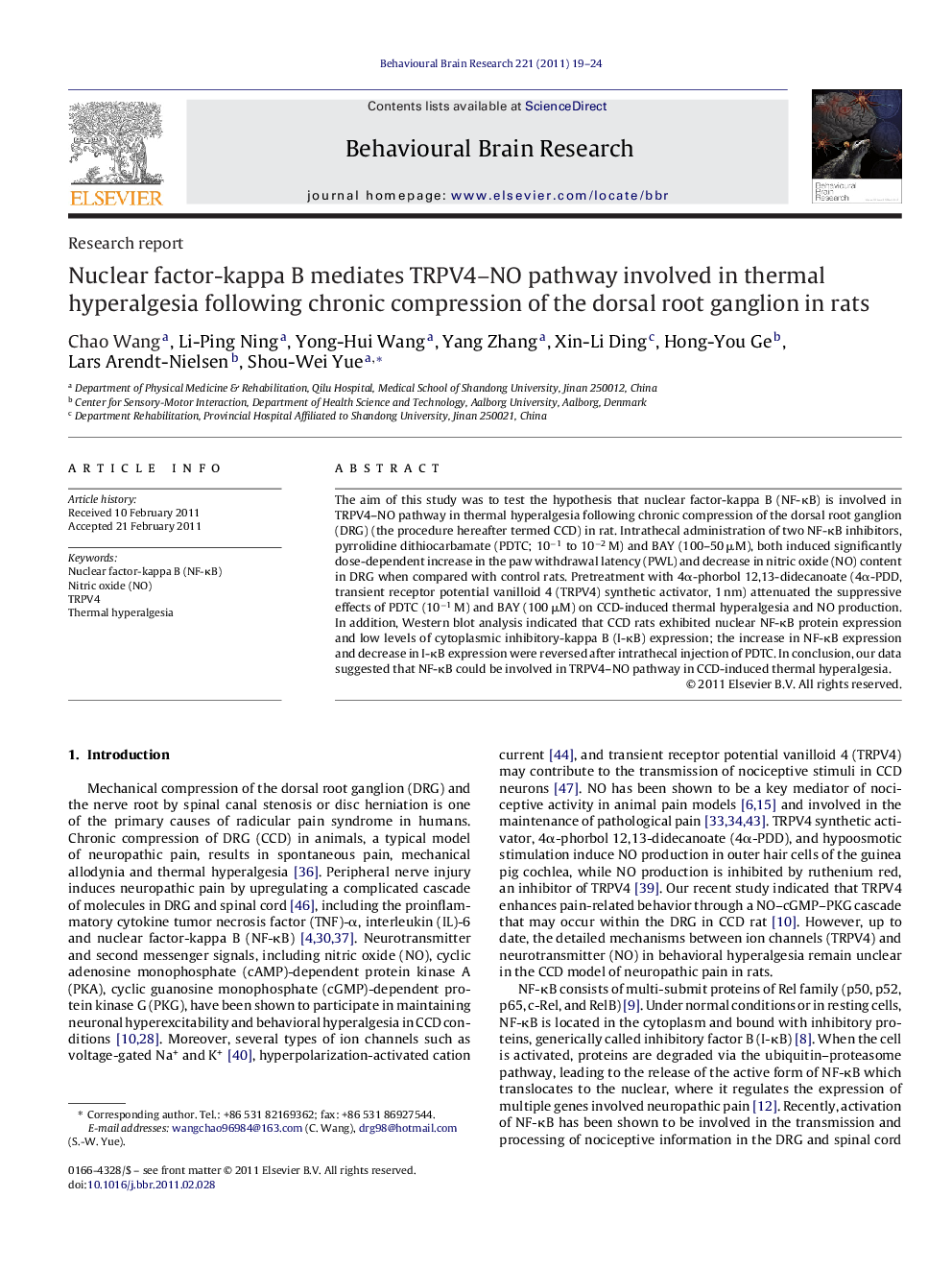| Article ID | Journal | Published Year | Pages | File Type |
|---|---|---|---|---|
| 4313671 | Behavioural Brain Research | 2011 | 6 Pages |
The aim of this study was to test the hypothesis that nuclear factor-kappa B (NF-κB) is involved in TRPV4–NO pathway in thermal hyperalgesia following chronic compression of the dorsal root ganglion (DRG) (the procedure hereafter termed CCD) in rat. Intrathecal administration of two NF-κB inhibitors, pyrrolidine dithiocarbamate (PDTC; 10−1 to 10−2 M) and BAY (100–50 μM), both induced significantly dose-dependent increase in the paw withdrawal latency (PWL) and decrease in nitric oxide (NO) content in DRG when compared with control rats. Pretreatment with 4α-phorbol 12,13-didecanoate (4α-PDD, transient receptor potential vanilloid 4 (TRPV4) synthetic activator, 1 nm) attenuated the suppressive effects of PDTC (10−1 M) and BAY (100 μM) on CCD-induced thermal hyperalgesia and NO production. In addition, Western blot analysis indicated that CCD rats exhibited nuclear NF-κB protein expression and low levels of cytoplasmic inhibitory-kappa B (I-κB) expression; the increase in NF-κB expression and decrease in I-κB expression were reversed after intrathecal injection of PDTC. In conclusion, our data suggested that NF-κB could be involved in TRPV4–NO pathway in CCD-induced thermal hyperalgesia.
► NF-κB inhibitors, PDTC and BAY, increased the PWL and decreased NO content in CCD. ► The effects of NF-κB inhibitors were attenuated by TRPV4 activator, 4α-PDD. ► TRPV4 induced NO production through activation of NF-κB pathway in the CCD rats.
